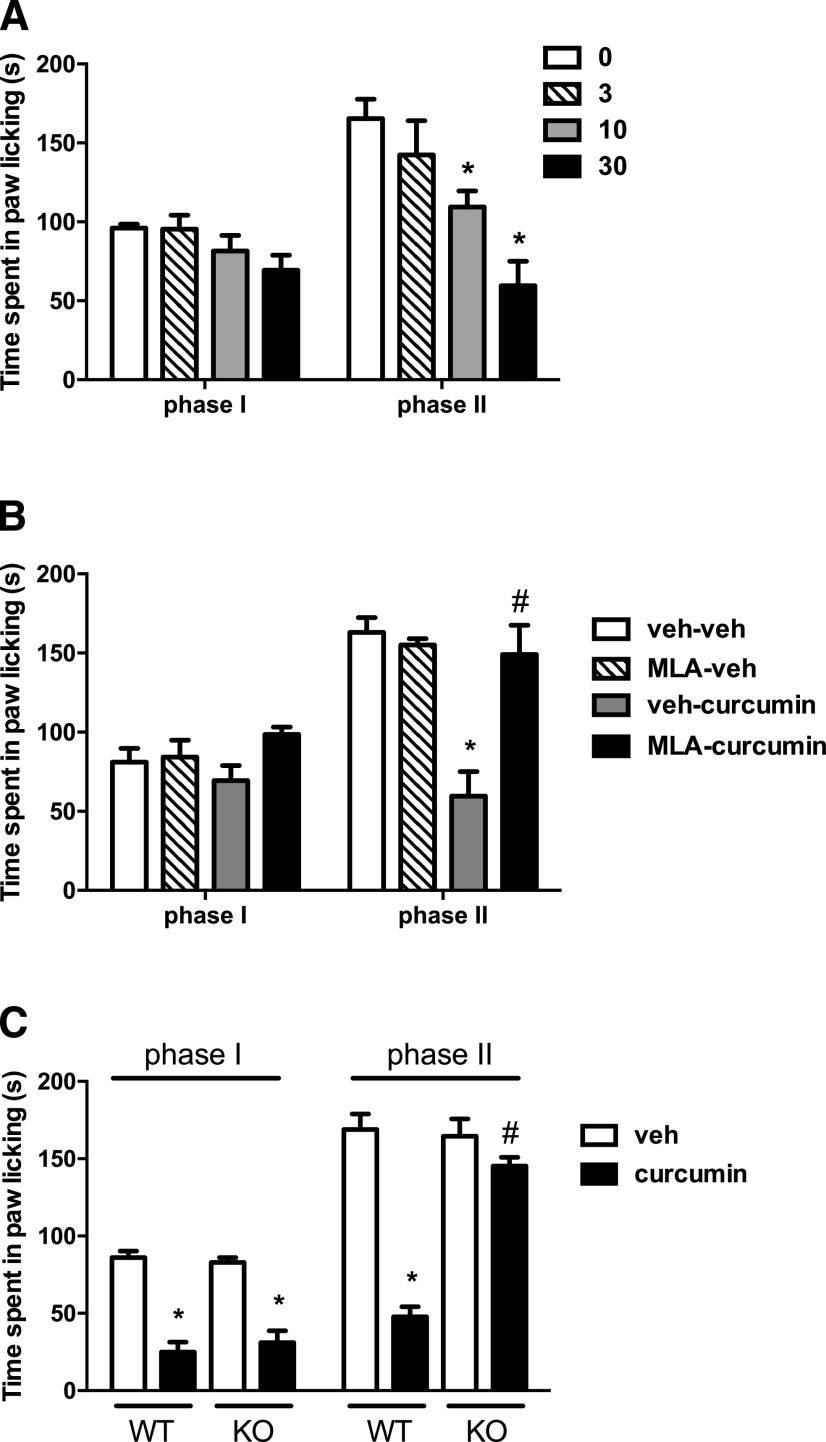Fig. 6.
The antinociceptive effects of acute curcumin in the formalin test. (A) The effect after i.p. administration of curcumin (3, 10, and 30 mg/kg) on formalin-induced pain behavior in ICR mice. Mice were treated with i.p. curcumin 45 minutes prior to formalin (2.5%, 20 μl) injection into the plantar region of the right hind paw. The cumulative pain response of time of licking was measured during the period of 0–5 (first phase) and 20–45 minutes (second phase). (B) Blockade of the antinociceptive effect of curcumin in the second phase of the formalin test by the α7 antagonist MLA citrate. MLA (10 mg/kg, s.c.) was given 10 minutes before curcumin (30 mg/kg, i.p.) or vehicle (veh) in ICR mice. After 45 minutes, formalin test was performed. (C) Antinociceptive effects of curcumin (30 mg/kg, i.p.) in the formalin test in the α7 WT and KO mice on C57BL/67 background. Data are given as the mean ± S.E.M. of six animals for each group. *P < 0.05, significantly different from its vehicle group; #P < 0.05, significantly different from its corresponding control group.

